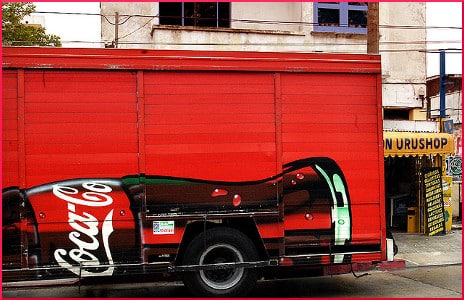
An enormous amount of resources of every kind have been spent in proving that sweetened soft drinks either are, or are not, largely responsible for the childhood obesity epidemic.
Aside from paying out a fortune to fund studies, beverage corporations also offer an astonishing variety of rationales to convince people that no problem exists. They want people to believe that drinking this stuff is okay, a grand illusion perpetuated by the slogan of “consumer choice.” They offer products with different numbers of calories shown on the package — so, what’s the problem? Various container sizes are available, ranging from 2-liter bottles all the way down to mini-cans — so, no problem!
Nothing to see here, move on
And flavors? They have hundreds, because the addictive potentiality of each individual set of taste buds on earth must be exploited. They will not rest until they have created a favorite flavor for everyone. The noble, hardworking scientists employed by these poor, misunderstood companies are only trying to please the customers. What’s wrong with that?
Coca-Cola brags that it sponsors many “physical activity and nutrition education programs” in many countries. Two very small examples: a couple of years ago, the company spent $300,000 in China persuading 50,000 participants that it’s fine to drink all the soda they want, as long as they do enough exercise to work it off. And for a South Korean “health camp,” Coke spent $200,000 to persuade 550 young people of the same wisdom. That’s a little over $360 per target.
Furthermore, last year Coke promised the American state of Georgia $3.8 million for the privilege of exposing their kids to the party line — the notion that a willingness to work off the calories imbibed in soda pop can, and should, be a priority in everyone’s life. The company really is all about winning hearts and minds.
The satiristas
Back in 1996, the satirical magazine The Onion announced that Coke was introducing a 30-liter bottle (that would weigh 274 pounds) despite the fact that the 3-liter bottle hadn’t been a success. The part about the 3-liter bottles was no joke. Both Coke and Pepsi sold them. You might expect that the manufacture of a 3-liter bottle would require 1 1/2 times as much plastic as a 2-liter bottle, but actually it took twice as much. For plastic plus soda pop, the consumer paid between $2 and $2.19 per bottle. By the time they were retired in 2005, the 3-liter bottles had been around for at least a quarter of a century.
Several years later, CampusSqueeze.com published an amusing history of Coke containers that included an astonishing claim:
The scary part is that, because of lack of technology, consumers are not informed that the soda product is not digested by their body and fulfills none of their daily water intake, but does fulfill all of their sugar intake.
Whether soda fills any part of the water requirement is arguable, but there is evidence that the caffeine in many soft drinks can cause dehydration. But then another study says that the body acclimates to caffeine and stops experiencing the diuretic effect. And so it goes.
Still, the most unintentionally humorous line in Coke’s propaganda is about how, because of the wonderful array of soda pop recipes, sizes, and flavors, “consumers can choose the best hydration options.” Without going to the trouble of measuring any sugar or caffeine, without performing a single study, common sense alone decrees that the consumer’s best hydration option is clean water.
Your responses and feedback are welcome!
Source: “Active Healthy Living,” coca-colacompany.com, 2012
Source: “Coca-Cola and Pepsi say goodbye to 3-liters,” CNHINewsService.com, 03/28/05
Source: “Historical Coca Cola Soda Sizes,” CampusSqueeze.com, November 2009
Image by Vince Alongi

 FAQs and Media Requests:
FAQs and Media Requests: 











